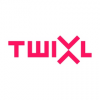In the fast-paced digital age, communication risks, and compliance has only become more important, and 2022 was no exception.
Last year alone, the Securities and Exchange Commission (SEC) and Commodity Futures Trading Commission (CFTC) charged 11 financial institutions $2 billion in fines for failing to collect, monitor, and preserve communications over WhatsApp and other messaging apps.
This and similar trends will only continue in 2023 and beyond, with communication compliance and risk prediction playing a critical role in ensuring businesses are adhering to regulations, protecting sensitive information, and mitigating potential legal and reputational risks.
Before we move on to the main things you should watch for in the coming year, let’s start with the basics.
What Is Communications Compliance?
Communications compliance is making sure that your company’s communications on different media are under all relevant laws and regulations and following your company’s policies.
Enabling compliance is now more complex than ever. Not only do laws, rules, and regulations come from various sources - federal, state, local, and industry- but business communication has spread to so many different media that companies now find it hard to monitor and control.
So, what are the main risks to staying compliant in 2023 and beyond?
Communications Management
In 2023, remote work and the widespread use of Software-as-a-Service (SaaS) applications will continue to be the reality for many businesses. However, besides making communication between remote and dispersed teams run smoothly and work more efficiently, monitoring all happening at these channels is a challenge many find hard to handle.
With the growing importance of chat and video conferencing apps, project management tools, and customer support platforms, the odds are high that some employees may not know each other all that well. Such an atmosphere makes employees more vulnerable to impersonation scams and the potential disclosure of sensitive information.
It’s also crucial for companies to be aware that virtual communications and workplaces increase the potential for electronic workplace harassment, which they may be held accountable for.
Capturing information and preserving its context will become challenging as screenshots from Zoom meetings or Slack chats may not be admissible in court and are not a method of choice for archiving social media. As a result, companies will need to find other ways to store and archive this information securely, and in 2023 we will almost certainly see an increased focus on this issue.
Cybersecurity Risks
With the advancement of technology, the risk of cyberattacks and data breaches increases. Small businesses are top targets and more vulnerable to cyber-attacks because they don’t have enough resources or the budget to combat ransomware attacks.
Businesses must implement new processes to gain more control and minimize these risks.
As employee communication and behavior are the leading cause of data breaches, training employees on internet-use best practices, securing your network, and having comprehensive systems in place to safeguard your communications are one of the starting points in reducing the cybersecurity risk.
Regulations Compliance
The regulatory landscape surrounding communication and data protection is constantly evolving. Therefore, organizations must stay up-to-date on changes and comply with federal or state laws and industry regulations.
Some areas of commercial communication are strictly regulated by law, while others can lead to potentially dangerous civil litigation.
Ensuring all communication practices comply with industry regulations, such as GDPR and HIPAA, will be crucial in avoiding fines and penalties.
Data Privacy
Protecting personal data and ensuring data privacy has become crucial and will continue to be so in 2023 and beyond. To comply, companies must implement strong privacy and security protocols to protect sensitive data.
When communicating with your customers and handling their data, you must comply with various regulations that apply to businesses, such as EU General Data Protection Regulation (GDPR), Canada's Anti-Spam Legislation, and CAN-SPAM (in the United States), among others. These regulations impose specific requirements on businesses, defining how they handle users' personal information.
Unethical Marketing and Advertising
Businesses tend to exaggerate the qualities or benefits of their services and products in their marketing and advertising campaigns.
Some overdo it to the point that their practice becomes unethical, with their statements being misleading or false.
However, there seems to be no escape from the public eye, and it will continue to be so in 2023 and beyond—those who get caught risk a lot in terms of both their finances and their reputation.
7 Steps to Minimize Communication Compliance Risks
Here are the steps you must take to minimize communication compliance risks in 2023:
1.) Staying up-to-date with regulations. Regulations surrounding communication practices and data protection are constantly evolving. Therefore, organizations must remain updated on these changes to ensure they comply and avoid penalties.
2.) Protecting sensitive information. Predictive risk analysis can help organizations identify potential security vulnerabilities and take action to prevent data breaches. This is especially important for organizations that handle sensitive information such as financial data or personal health information.
3.) Using a reliable cloud archiving tool to keep comprehensive archives of all your business communications. These tools can record interactions in real time with all the relevant contextual data and securely archive them for easy access, which can be helpful in potential litigation. For example, in a legal dispute, archived communication data can be used as evidence to defend against possible legal challenges or to support eDiscovery requests, which can save time and resources in legal proceedings.
4.) Creating a solid communication compliance policy that regulates your internal and external business communications, including the relevant rules and procedures your employees must follow. This policy should also include guidelines for securing accounts and an explanation of roles and responsibilities.
5.) Training your employees regularly and ensuring they follow the communications compliance policy. This can be achieved through compulsory onboarding training for new hires and controlling who has access to your social media accounts and the approval procedure.
Reputation Management. Companies must also consider the impact on their reputation if a data breach or non-compliance occurs. A damaged reputation can lead to loss of customers and harm to a company's brand and financial stability.
Effective communication compliance and risk prediction are crucial for organizations to stay compliant with regulations, protect sensitive information, minimize legal risks, and maintain the trust of stakeholders in 2023 and beyond.


















